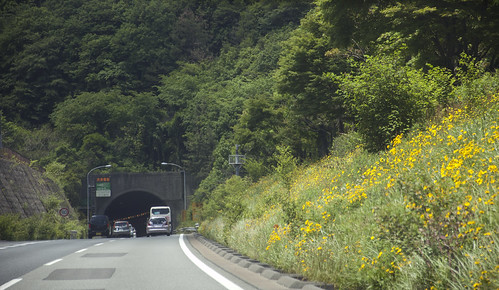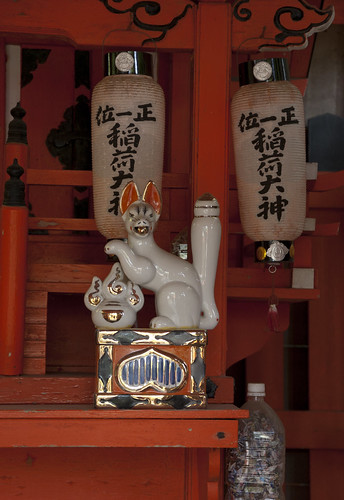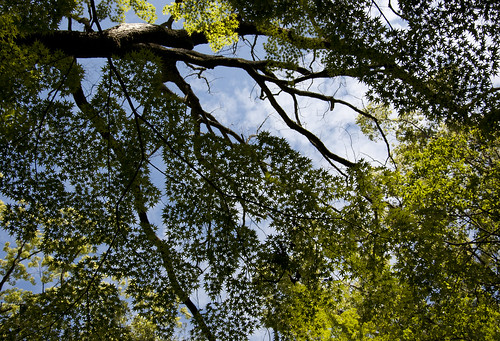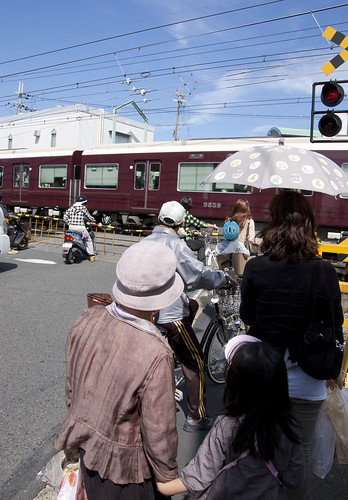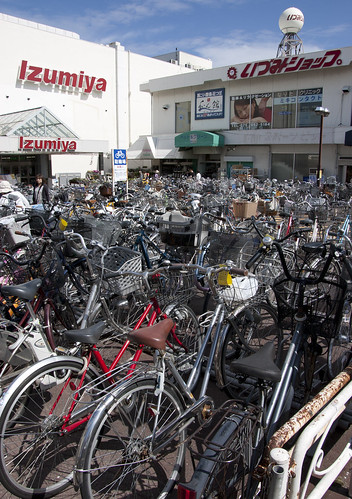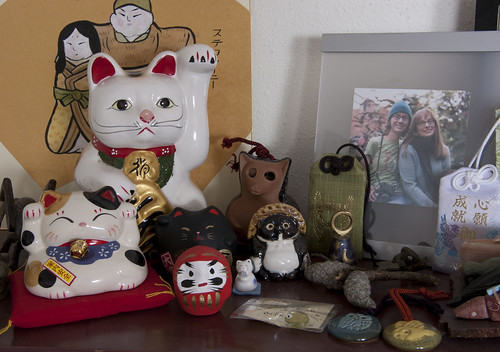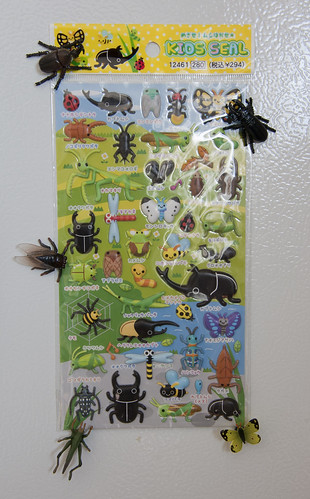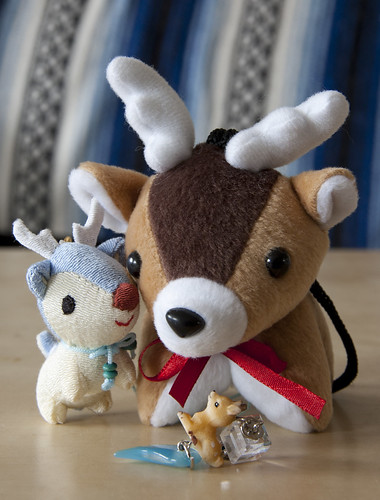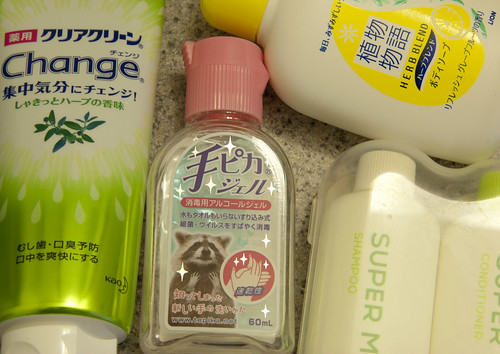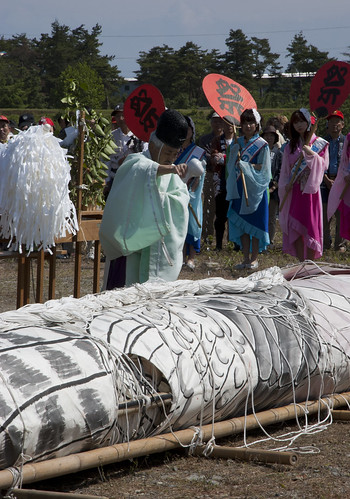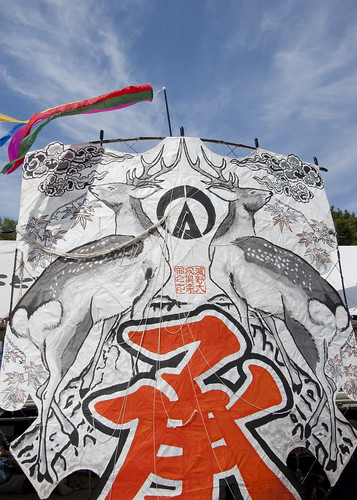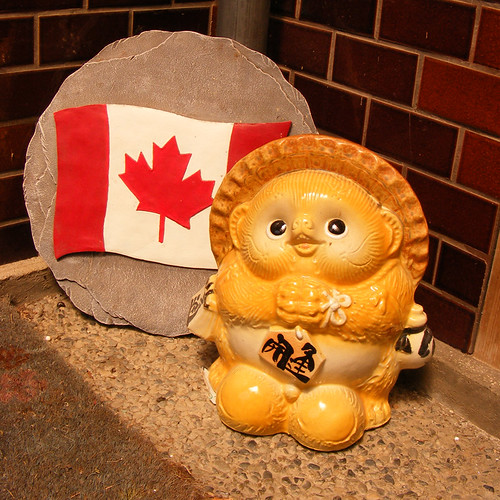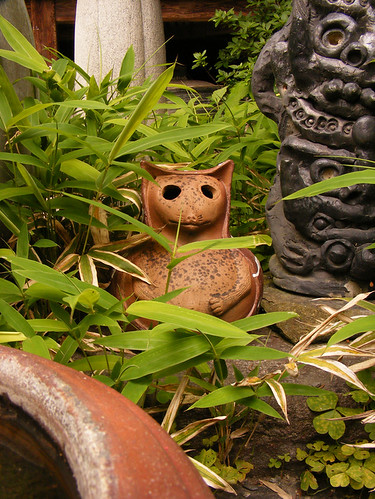When Jorie and I had our first day out and about in Marquette after returning home from Japan, we had a bit of reverse-culture-shock. In Japan, we never really felt shocked or homesick at all, but upon returning home, we definitely felt a little strange.
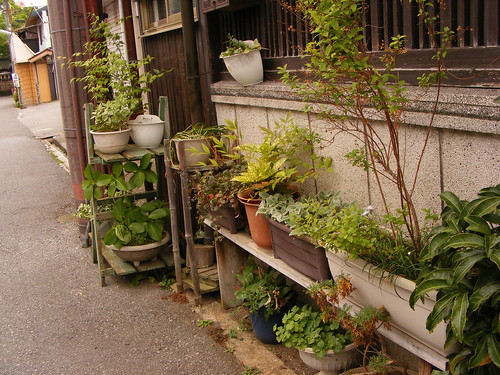
The roads seemed very wide. Everything here seemed way too far apart. Useless, water-wasting lawns sprawled everywhere, trimmed neatly for no apparent reason other than cultural tradition. Space in Japan is used very wisely, and for good reason. But one can't help but admire the way the space is used, no matter the reason. There are no useless lawns, but instead every home has a garden, whether it's a good size or a tiny one. Even homes along the streets have many potted plants out front. If there is grass or a field, wild plants are allowed to grow. If there is a large space not being used in town, it becomes a vegetable garden or a rice paddy. It does make one think about how we do things like this in America. We have strange zoning laws that prevent that kind of integration. Lawns, both at businesses and at homes, are really quite strange and quite demanding when you think about it. They require fuel and time for cutting, they require far more water to stay green than native plants, and people often cover them with poison to control "weeds" and insects. It's rare to see this phenomena in Japan, at least where we were.

Transportation! Cars in Japan are small to match the narrow roads. It seems to work fine, even when our host mother had to fit Jorie and I, along with our matching suitcases and carry-on bags into the car. Sometimes the old roads are a little too narrow though, and people must pull over so the other car can get by. Bicycles are used a lot more, as well as people's own two feet. We walked a lot in Japan, and we noticed a lot of bicycles, too. In places where it's feasible to walk or bike to their destination, that's what they do. We decided to walk a little more in Marquette, and today we did all our errands on foot for a change. It was actually quite nice.
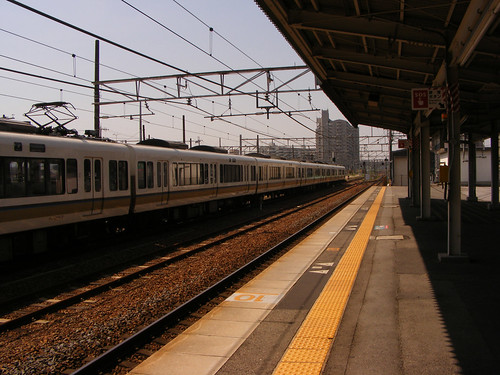
There are also buses and trains everywhere in Japan. They are seldom late. Public transit does not go to waste by any means. When we came home, Jorie and I were discussing how useful trains would be in Michigan. A bullet train in lower Michigan sure would be nice! Buses aren't a common thing in this part of Michigan, but we're hoping we can utilize them once we move downstate.
The Japanese take good care of their skin. On bright, sunny days, people wear clothing that is light and thin, but covers their skin. They also tend to carry umbrellas and wear hats. Our host mother mentioned traveling in America and having an umbrella to block the sun, only to feel out of place since no one else was using one. It makes sense, but we explained that people would stare or laugh at you here if you used an umbrella because it's not common. Jorie and I wonder if the difference is that people in America always want to get a tan.
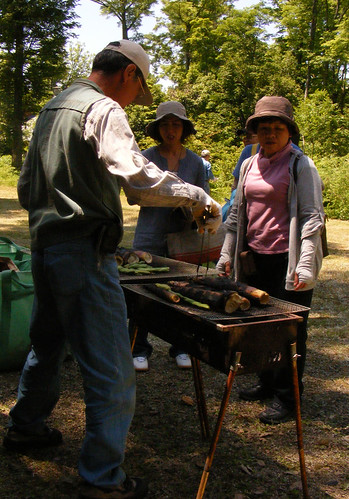
This photo of some ladies shopping for grilled takenoko was taken on an incredibly hot, sunny day, yet they are covered head to toe. I tried wearing my hooded jacket that day and it wasn't as bad as I expected. I'm glad I did because everything that wasn't covered was horribly sunburned- especially my poor nose.
Other random things we noticed on our first day or so back is how simple our own English letters looked. We could read the signs and the packaging on items in the store! It seemed like magic after weeks of being confronted with complex kanji characters we had no hope of reading. We didn't greet people as much. When we arrived in the Minneapolis airport, one of the first things we saw after customs was people being driven around on small vehicles
inside the airport instead of walking. There aren't vending machines in strange places here, and certainly not with the frequency in which we saw them in Japan.
Also, the only Japanese restaurant in town (the one on campus) was serving rice that didn't quite taste Japanese. The miso soup had a little too much miso, and the inari sushi's aburaage pouch seemed to be fried in a little too much mirin and not enough soy sauce. I guess we're connoisseurs now. We eagerly await our
vegan Japanese cook book in the mail.
 Of course, when you think of sushi, you think of fish. But ours was all vegan, with combinations like sesame seed and cucumber, asparagus and carrot, and daikon radish and pea sprouts. We had wasabi, shoyu, and pickled ginger available, as any sushi restaurant would!
Of course, when you think of sushi, you think of fish. But ours was all vegan, with combinations like sesame seed and cucumber, asparagus and carrot, and daikon radish and pea sprouts. We had wasabi, shoyu, and pickled ginger available, as any sushi restaurant would!

 I didn't have a cookie cutter, so I used a knife to cut out shapes of "Chu" Totoro and "Chibi" Totoro, as well as a few mushrooms. This was my first time using the royal icing flooding technique, and I was pleased with the results.
I didn't have a cookie cutter, so I used a knife to cut out shapes of "Chu" Totoro and "Chibi" Totoro, as well as a few mushrooms. This was my first time using the royal icing flooding technique, and I was pleased with the results.



